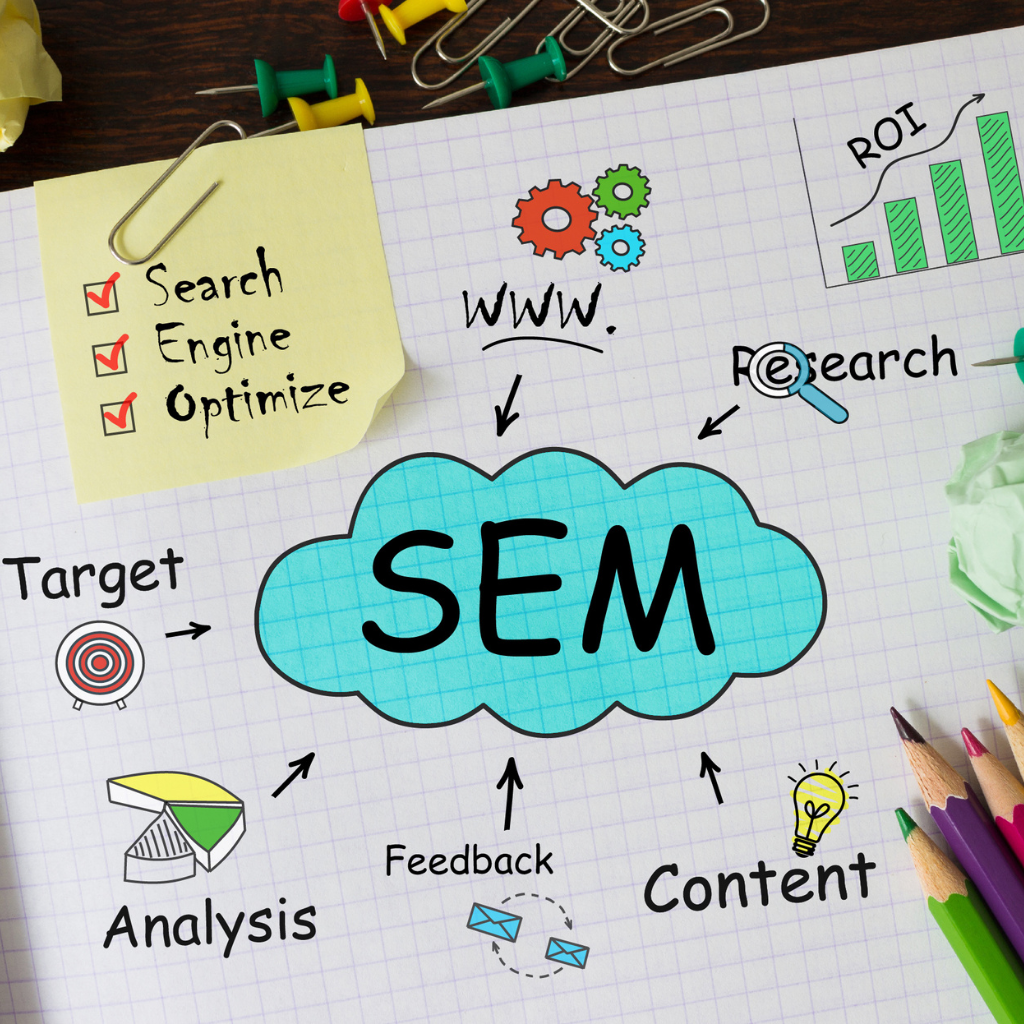
The Ultimate Guide to Paid Search Marketing That Converts
If you’re not showing up on Google, you don’t exist.
And if you’re not leveraging SEM, you’re leaving money on the table.
This isn’t just another blog post. This is your blueprint to understanding Search Engine Marketing (SEM)—what it is, how it works, and how to use it to dominate your market.
Let’s break it down.
What Is SEM?
SEM (Search Engine Marketing) is a digital marketing strategy that uses paid advertising to appear in search engine results. It’s how you get your business in front of high-intent buyers—instantly.
Unlike SEO, which takes time to build, SEM delivers immediate visibility. You pay to play, but when done right, the ROI is undeniable.
How Does SEM Work?
SEM works by placing your ads at the top of search engine results pages (SERPs) when users search for specific keywords.
Here’s how it works:
- You choose target keywords (e.g., “digital marketing agency,” “social media marketing,” “Google Ads agency”)
- You create compelling ads
- You bid on those keywords in platforms like Google Ads
- Your ad appears when someone searches for that term
- You pay only when someone clicks (PPC = Pay-Per-Click)
It’s not just about traffic. It’s about buying intent. SEM puts your offer in front of people who are actively searching for what you sell.
Why SEM Is a Game-Changer for Business Growth
→ Speed: You can launch a campaign today and get leads tomorrow
→ Precision: Target by keyword, location, device, time, and more
→ Scalability: Increase budget, increase leads—instantly
→ Data-Driven: Every click, impression, and conversion is trackable
→ Control: You decide what shows, when, and to whom
At Sparky Studios, we use SEM to help brands dominate their niche with easy traffic, high-converting ads, and measurable ROI.
SEM vs SEO: Which Is Better?
Let’s be clear: It’s not either/or. It’s both.
| Feature | SEM | SEO |
| Speed | Immediate | Long-term |
| Cost | Pay per click | Time and content investment |
| Control | High | Medium |
| Trust | Lower (ads) | Higher (organic) |
| Longevity | Short-term | Long-term |
SEM is better for:
- Launching new products
- Testing offers
- Driving fast traffic
- Capturing high-intent leads
SEO is better for:
- Building long-term authority
- Reducing cost per lead over time
- Ranking for informational content
Smart businesses use both.
SEM feeds the funnel. SEO builds the brand.
What Platforms Are Used for SEM?

The most powerful SEM platforms include:
- Google Ads: The king of paid search. Reach billions of users actively searching.
- Microsoft Ads (Bing): Lower competition, often cheaper CPCs.
- YouTube Ads: Video-based SEM with massive reach.
- Google Display Network: Banner ads across millions of websites.
- Shopping Ads: For eCommerce brands looking to dominate product searches.
At Sparky Studios, we specialize in Google Ads and paid search marketing that converts. We don’t just run ads—we engineer campaigns that scale.
Who Should Use SEM?
→ Startups that need leads fast
→ Local businesses looking to dominate their area
→ E-commerce brands wanting to scale sales
→ Service providers targeting high-intent keywords like “Google Ads agency” or “SEO & SEM services”
→ Any business that wants to stop relying on referrals and start owning their lead flow
If you’re serious about growth, SEM isn’t optional—it’s essential.
High-Intent Keywords to Target
From our internal keyword research and the Sparky Studios keyword database, here are some high-volume, low-competition keywords you should be using in your SEM campaigns:
- easy traffic marketing agency
- digital marketing
- social media marketing
- SEO & SEM services
- paid search marketing
- Google Ads agency
- marketing strategy for small business
These aren’t just keywords. They’re buyer signals. Use them right, and you’ll attract leads ready to convert.
How to Launch a High-Converting SEM Campaign
- Define Your Offer
→ What are you selling? Why should someone care? - Choose the Right Keywords
→ Use tools like Google Keyword Planner or SEMrush
→ Focus on high-intent, low-competition terms - Write Killer Ad Copy
→ Clear headline
→ Strong value prop
→ Compelling CTA - Build a Landing Page That Converts
→ Fast, mobile-friendly, and focused
→ One goal, one CTA - Set Up Conversion Tracking
→ Use Google Tag Manager and Google Analytics
→ Track form fills, calls, purchases - Optimize Weekly
→ Kill underperforming ads
→ Double down on winners
→ A/B test everything
Call to Action
Want to launch SEM campaigns that actually convert?
At Sparky Studios, we don’t just run ads—we build growth engines.
→ Book your free SEM strategy session now
→ Visit Sparky Studios ↗ to get started
FAQs
What is SEM?
Search Engine Marketing (SEM) is a paid strategy to appear in search engine results and drive targeted traffic.
How does SEM work?
You bid on keywords, create ads, and pay when someone clicks. It’s fast, measurable, and scalable.
Is SEM better than SEO?
SEM is faster. SEO is more sustainable. The best strategy is to use both.
What platforms are used for SEM?
Google Ads, Microsoft Ads, YouTube Ads, and Google Display Network are the most common.
Who should use SEM?
Any business that wants fast, targeted traffic and measurable results—from startups to established brands.
Stop waiting for leads. Start generating them.
→ Let Sparky Studios build your SEM strategy and scale your business—fast.

